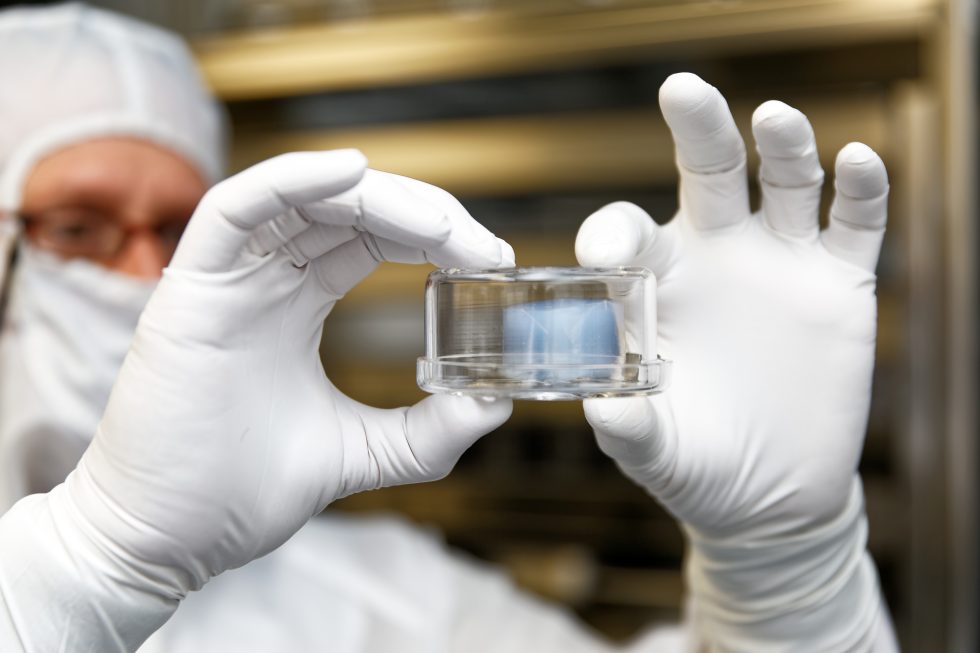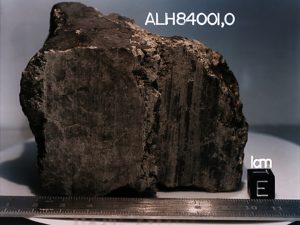
HOUSTON, Tex.—Building 31 on the campus of Johnson Space Center lacks the Tower of London’s majesty and history. No Queen’s Guard stand outside. But this drab, 1960s-era building is nonetheless where NASA keeps the crown jewels of its exploration program. Inside various clean rooms, curators watch over meteorites from Mars and the asteroid belt, cosmic dust, samples of the solar wind, comet particles, and, of course, hundreds of kilograms of Moon rocks.
In late December, Ars spent a day visiting these collections, including the rarely accessed Genesis Lab. While our request for a Moon rock keepsake was sadly rebuffed, we nonetheless got a VIP tour of every astromaterial NASA has collected from other bodies in the Solar System and beyond. With Senior Space Editor Eric Berger providing the words and Senior Technology Editor Lee Hutchinson capturing the photos, we can now offer an unprecedented look at how NASA protects its rarest and most valuable off-world samples.
Antarctic meteorites
To start, we wanted to see the famous Mars rock.
Before entering NASA’s meteorite lab, we had patiently removed our wedding rings and then donned booties, a surgeon’s cap, and a white gown. From the changing room, we moved into a small chamber for an air shower to remove loose particles from ourselves—it felt a bit like one of those hurricane “simulators” at an amusement park. Finally, we walked into a brightly lit, sterile room where NASA keeps asteroids that scientists collect in Antarctica.
The collection houses about 20,000 rocks, but the most famous of those rocks is ALH84001. Sometime around 16 million years ago, a large meteorite or asteroid 0.5 to 1 km across or larger struck the Martian surface and blasted some rocks into space at a speed greater than the red planet’s escape velocity. One of them flew through space until about 13,000 years ago when it crashed into Antarctica. A team of scientists funded by the National Science Foundation found it during the winter of 1984, although they didn’t know it had come from Mars at the time.
Americans weren’t the first people to realize that Antarctica was the best place in the world to find meteorites. Japanese researchers had been traveling there to collect them since the 1960s. When University of Pittsburgh geologist William Cassidy learned of their successful discovery of all kinds of meteorites in 1973, he convinced the National Science Foundation to fund US expeditions. By 1976, Americans were joining the Japanese scientists in the field; the NASA lab was created two years later to house the samples.
-
Meteorites are stored inside cabinets filled with nitrogen to prevent rusting.Lee Hutchinson
-
And it takes a lot of cabinets to hold 20,000 meteorites.Lee Hutchinson
-
When processed for study by outside researchers, the meteorites are handled with gloves inside the cabinets.Lee Hutchinson
-
Although the meteorites were unprotected for thousands of years in Antarctica, curators do the best they can to prevent further deterioration.Lee Hutchinson
-
Each meteorite is kept frozen until it reaches the lab, where it is quickly dried out.Lee Hutchinson
-
Kevin Righter gave us a tour of the lab that rocked!Lee Hutchinson
-
Eric Berger asks, "Would you like fries with that?"Lee Hutchinson
-
Sometimes the rocks get a little grabby.Lee Hutchinson
-
Meteorites or body parts, no one knows for sure.Lee Hutchinson
-
Umm, NASA?!?Lee Hutchinson
-
Here's where we were disabused of any stray particles in an air shower before entering the lab.Lee Hutchinson
-
Behold, it's ALH84001!Lee Hutchinson
Although the flux of meteorites into Antarctica is no different from anywhere else in the world, the continent has an arid, cold environment with few people, helping meteorites stay intact. The geography helps as well. As massive sheets of ice flow away from the South Pole, they run up against the Transantarctic Mountains, a tall range running 3,500 km across the continent. The ice increasing in thickness as it piles up against the mountains, meteorites fall onto the wide, flat polar region and are swept up in this flow, which turns upward upon reaching the mountains.
“As this ice turns up, the right combination of elevation and temperature creates an ablation zone for the ice, and the meteorites stay behind,” explained Kevin Righter, a planetary scientist and the Antarctic meteorite curator. “There are areas on the ridge with incredible concentrations of meteorites.”
The rocks are kept frozen until they reach the lab in Houston. This prevents further rusting and alteration of minerals that can occur at higher temperatures. Once in the lab, scientists thaw the rocks in a warm, dry environment that rapidly carries the moisture away. Afterward the rocks are kept inside nitrogen cabinets to prevent further oxidation.
About a decade after scientists found ALH84001, they realized it and about a dozen others like it almost certainly came from Mars, because it contained traces of gas just like those in the Martian atmosphere.
This led to an unexpected surge of interest in the lab. As Johnson Space Center’s Dave McKay and other scientists examined the rock, they found tiny, odd features that resembled worm-like fossils. Upon this basis, the group published a 1996 article in the journal Science in which they claimed to have found evidence of ancient life on Mars. Overnight, the Antarctic meteorite lab became one of the hottest places in the world. Scientists and journalists alike clambered to get inside.
Today, with NASA rovers scrambling all over the surface of Mars, one might think finding new Martian rocks in Antarctica, where they have been exposed to Earth’s atmosphere for thousands of years, would not be scientifically useful. That view is wrong, Righter said.

“Martian meteorites are still of great interest,” he explained. “We’ve gotten a lot of great information about Mars from the rovers, and a lot of the emphasis has been on finding rock evidence of flowing water, volatiles, and things that might relate to life. However when we collect Mars rocks here on Earth, there’s not a lot of evidence for those kinds of processes in the meteorites. So we think we might be missing a significant portion of the rock diversity on Mars in our current collection. If we actually found a piece of sedimentary rock from Mars there are so many kinds of measurements you could make in labs on Earth compared to what we can do with robotic missions.”
In addition to its Mars rocks, NASA has hundreds of meteorites from the large asteroid Vesta, and some they believe come from other bodies in the asteroid belt. There are also meteorites from the Moon, and Righter said these offer a valuable diversity compared to our sampling at the six lunar landing sites. Then there are a few dozen "oddball" meteorites, which scientists cannot trace. Could one of them have originated on Venus or Mercury? It’s possible, Righter said. The discovery of new, interesting meteorites is why scientists return to Antarctica every November.
As for ALH84001, Righter retrieved the bagged meteorite in short order. “This is it,” he said, setting it onto a scale. “You can see it’s a big hunk of rock.” It was a big hunk of rock. Shortly after the watershed paper in Science, a majority of the scientific community came up with other, seemingly more plausible explanations for the small fossil-like tunnels. The rock is lifeless today and probably always has been.
Still, the search goes on. If the Universe is going to bring chunks of other worlds to Earth, the least we can do is go and pick them up.
reader comments
83